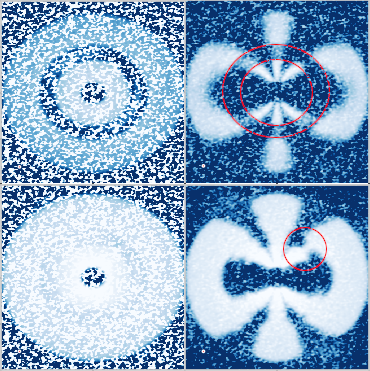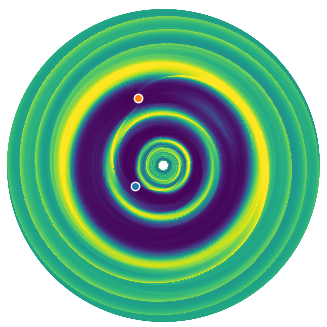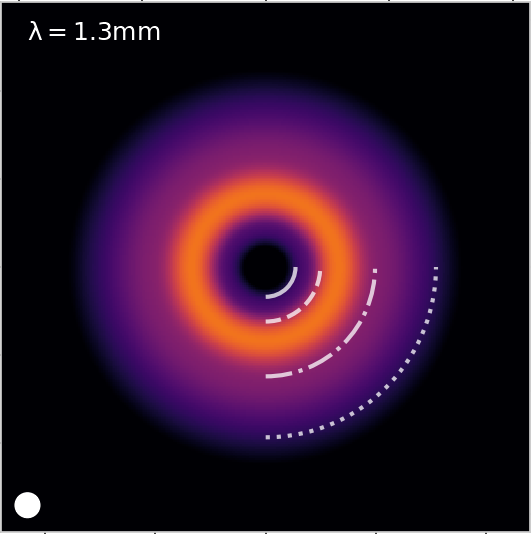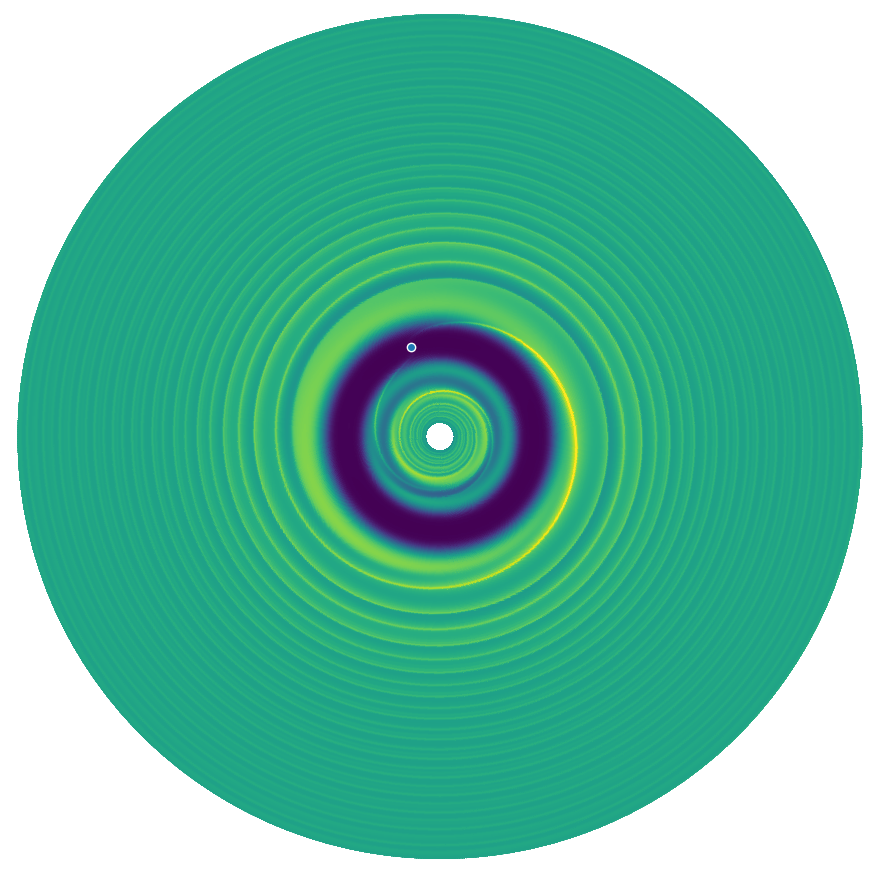Research
My work focuses on the formation of giant planets embedded in gaseous disks. To study it, I run hydrodynamical simulations, dust evolution models and radiative transfer codes. My main goal is to study the observability of the imprint of forming giant planets on their surrounding in order to better link planet formation models to observations. Here you can find the projects I worked on, summarized by some keywords. For more details, please refer either to the page of each project or to the paper linked. If you have any questions, you can contact me, I will be happy to discuss with you.
Planet formation contextWhen a star is born, it is surrounded by a disc composed of gas and dust. It is in this gas and dust that the planets form: it's called a protoplanetary disc. The
dust will agglomerate to form larger blocks of solid material, called planetesimals. These planetesimals are a few kilometers in size and will collide and agglomerate to create
the cores of planets. If the planet is massive enough, then it will start to attract gas around it. The planet enters then a phase of slow gas accretion. Gas and solids are accreted until
the mass of the solid core and the mass of the gaseous atmosphere reach similar masses. At this moment, the atmosphere collapses on itself,
allowing more gas to flow in the planet: the planet enters a rapid phase of gas accretion called runaway gas accretion.
If we represent the protoplanetary disc as seen from the edge (focusing on one side of the star), where the gas is represented in blue
and the solids in light orange, each step will look like this until the dissipation of the gas:
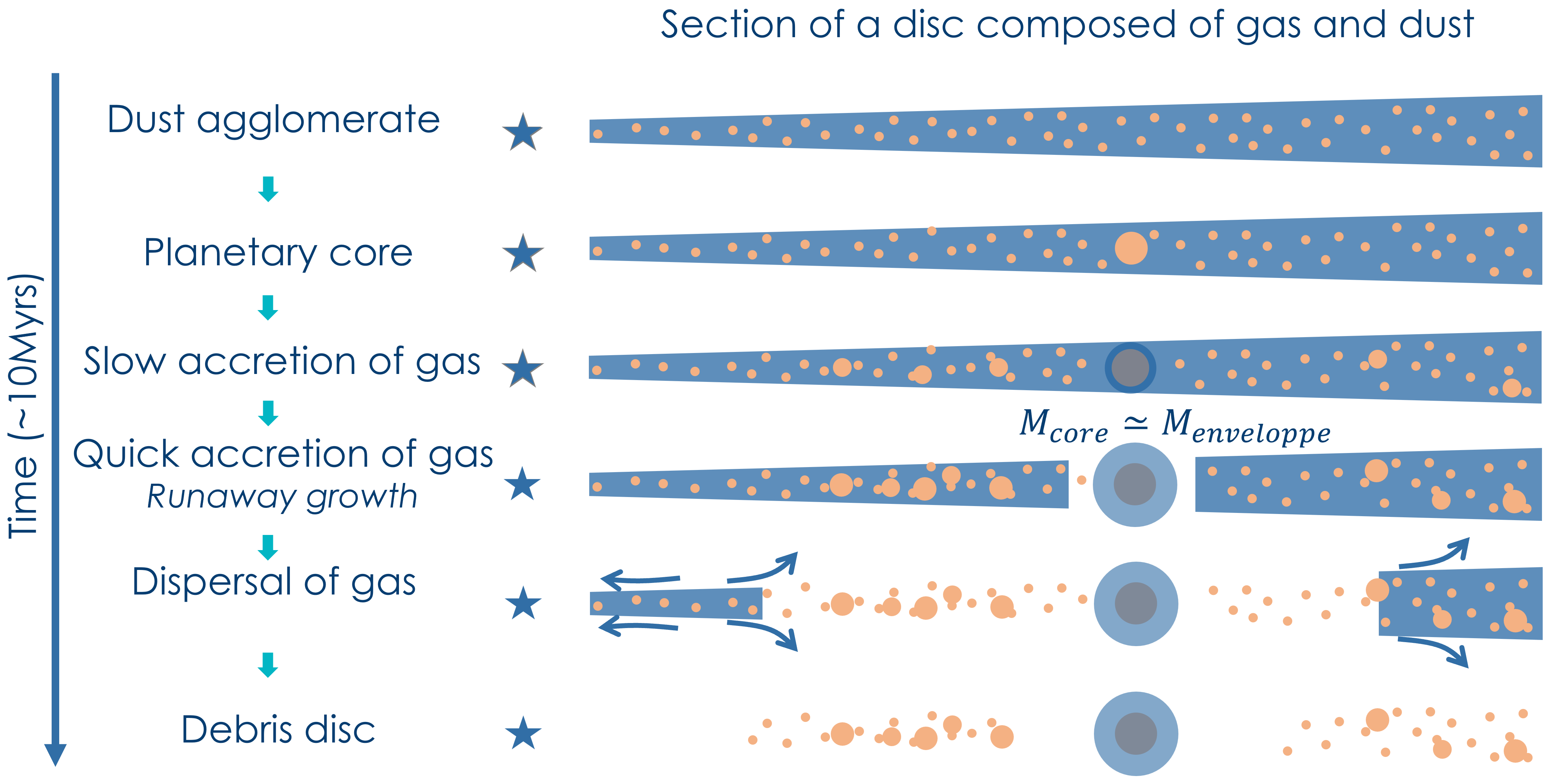
My work consists in studying each step individually under different circumstances, or how the steps can be linked together. For example, in my first
first project, I studied how gas accretion can influence the protoplanetary disc characteristics on a larger scale,
assuming that the planetary core is already formed and that the planet just entered the last phase of runaway growth.
Observing planetary gaps in the gas of debris discs
C. Bergez-Casalou & Q. Kral
Oct. 2024 - accepted in A&A - arxiv:2411.14241
Synthetic imaging (ALMA), hydro-dynamical simulations (FARGO3D), radiative transfer (RADMC3D), observation simulation (CASA), observability of gaps, gas in debris discs, application to HD138813
Read more
Simultaneous gas accretion onto a pair of giant planets: Impact on their final mass and on the protoplanetary disc structure
C. Bergez-Casalou, B. Bitsch, S.N. Raymond
Jan. 2023 - published in A&A - arxiv:2211.16239
Planet gas accretion, multiple planets, hydro-dynamical simulations (FARGO2D1D), impact on observations of exoplanets, impact on surface density structure
Read more
Constraining giant planet formation with synthetic ALMA images of the Solar system’s natal protoplanetary disc
C. Bergez-Casalou, B. Bitsch, N.T. Kurtovic, P. Pinilla
Mar. 2022 - published in A&A - arxiv:2201.03383
Synthetic imaging (ALMA), hydro-dynamical simulation (FARGO2D1D), dust evolution (TWOPOPPY), radiative transfer (RADMC3D), multiple planets, traffic jams,
observed dust masses, comparison to observations
Read more
Influence of planetary gas accretion on the shape and depth of gaps in protoplanetary discs
C. Bergez-Casalou, B. Bitsch, A. Pierens, A. Crida, S.N. Raymond
Nov. 2020 - published in A&A - arxiv:2010.00485
Planet gas accretion, single planet, hydro-dynamical simulations (FARGO2D1D), gap opening mass, impact on observations
Read more
